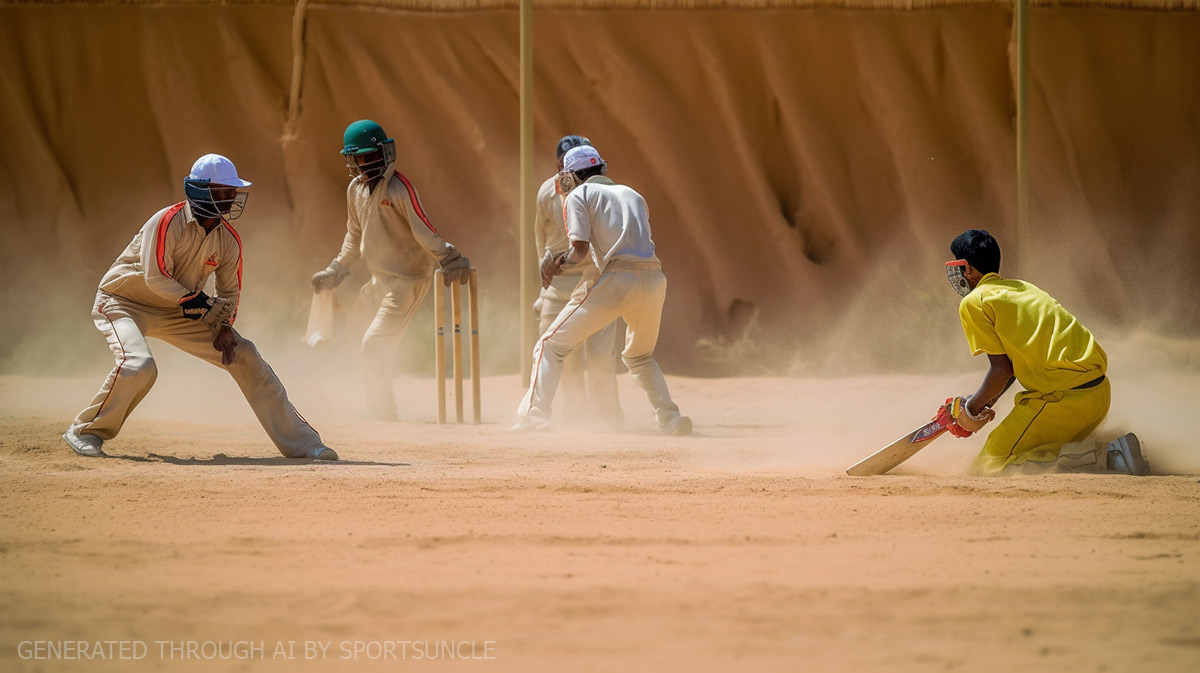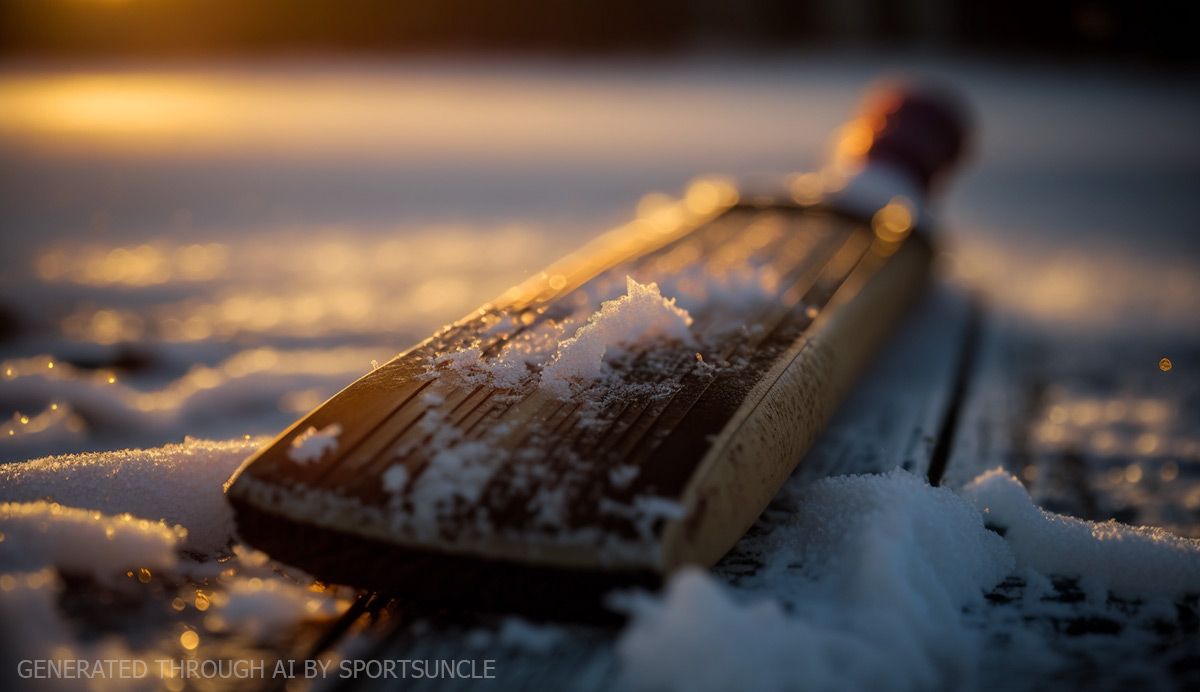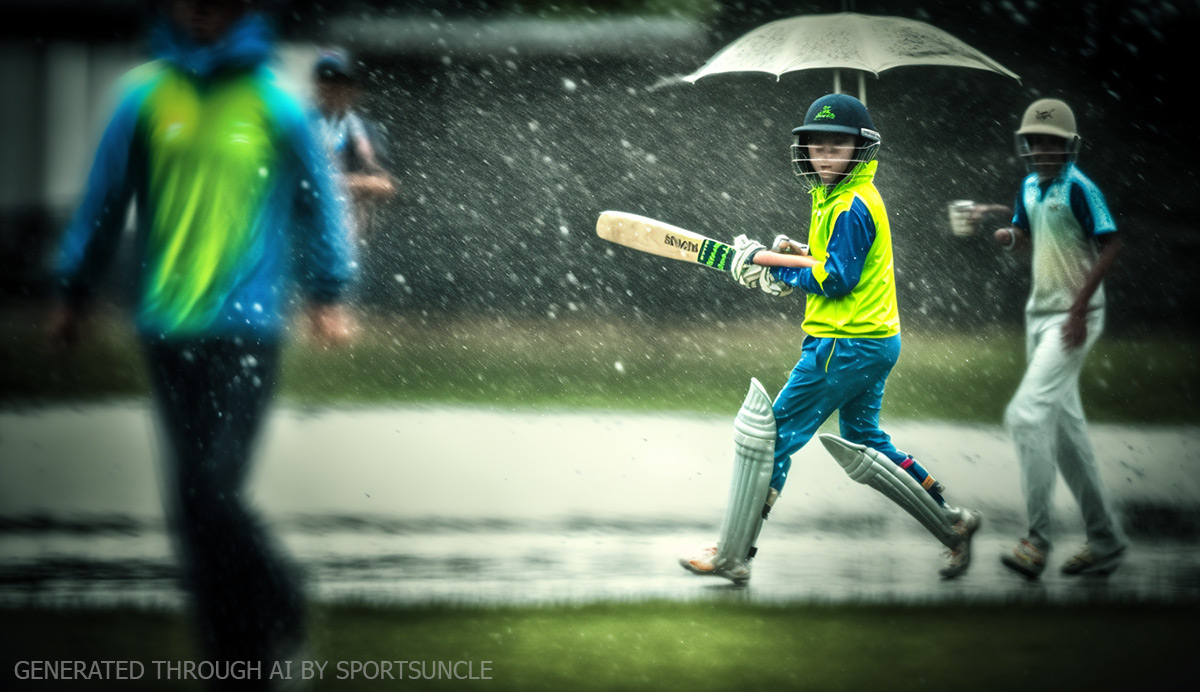On the cricket field, the synergy between a player and their cricket bats can make all the difference. A perfect cricket bat is more than just a piece of equipment; it’s an extension of the cricketer, shaping their game and moulding their performance.
The game of cricket, which depends on several variables, including the weather, is renowned for its grace and beauty. The bat is a crucial piece of equipment required to score runs in the sport of cricket, which calls for a lot of other gear as well. But different weather conditions can greatly affect how well and how long cricket bats work and last.
This article will examine how the weather affects cricket bats in various seasons.
Understanding the Cricket Bat
Before examining the effects of weather on cricket bats, it is important to understand the bat's structure.When shopping for cricket bats, two primary types must be considered English Willow and Kashmir Willow. – Each one has properties that can determine the power and control of a player’s game as well as their durability. Although they vary in terms of cost, both provide quality wood construction with distinct characteristics worth researching before making an informed purchase decision.
English Willow is a durable, lightweight material that can sustain the impact of a cricket ball and is typically used to construct cricket bats. The grains on these bats tend to have straighter patterns, which enhance precision when batting.
Kashmir Willow cricket bat is designed especially for beginners or recreational players who need something affordable yet durable enough to take some abuse during playtime.
The bat consists of a blade, handle, and grip, with the blade being the most essential part. The blade is the striking surface, and its curvature affects the ball's trajectory when struck.
Read: Understanding Imperfections and Grains in English Willow
Effects of Summer on Cricket Bats
As the temperature rises and the sun shines brightly in the summer, cricket games are at their best. Unsurprisingly, cricket devotees are always searching for ways to enhance their skills, given the sport's long history and soaring popularity.The impact of summer on cricket bats is an aspect of the sport that is frequently neglected.

Effects of Heat and Humidity
As summer progresses, so do the temperature and humidity. The effect on cricket bats might be dramatic. The first possible outcome is an increase in the bat's moisture content. As a bat soaks in water, it becomes heavier, which might make it harder for the batsman to hit the ball. When the bat loses shape and becomes twisted due to increased moisture content, its performance suffers.Another side effect of high temperatures and humidity is that the bat might dry up and crack. A player's frustration levels will likely rise while using a bat that has grown brittle and breaks quickly.
The bat's fibres dry up and grow more brittle with time, which increases its susceptibility to cracking and breaking. To counteract this, constant oiling of the bat is necessary to keep it moist.
Impact of Winter Season on Cricket Bats
The days become shorter, and the air gets colder as winter approaches. This may have a major impact on the effectiveness of cricket bats, an essential tool for every cricket player.
Cricket bats made of wood might become stiffer and less flexible in colder temperatures due to the wood's natural tendency to shrink. Shots may lose power and become less accurate as a consequence.
It might be difficult to have a strong grip on the bat at lower temperatures since the grip can become harsher and less pleasant to grasp.
However, winter weather is not the only factor affecting cricket instrument efficacy. Low levels of humidity may also play a role. Wood may become brittle and break easily when exposed to dry air. This can cause the bat to break while players are playing, which can be frustrating and expensive.
When winter sets in and temperatures drop, sports grounds will likely experience changes in their playing surface. Specifically, it is not uncommon for grass to turn dry and rigid, which can harm games played on these fields.
One such effect is that players may struggle to hit balls confidently since there's an increased risk of accidental contact with the ground, leading to bat chips and other forms of deterioration.

Impact of Rainy Season
Cricket players and spectators experience both happiness and frustration during the rainy season. On the one hand, the luxuriant, grassy grounds and the calm, revitalizing air provide an ideal sports environment. On the other hand, rain can wreak havoc and destruction, particularly when it comes to cricket instruments.The performance of cricket bats can make or break a player's performance. Nevertheless, the rainy season can substantially impact their quality and durability.
The humidity levels should be taken into account initially. This can cause the cricket bat to accumulate all the moisture, making it heavier and less responsive. Additionally, the moisture in the air can cause the bat to expand, causing deformation and splitting.
The wet ground is an additional issue. It is difficult for players to regulate their strokes because the ball can skid and bounce unpredictably. This can lead to accidental contact with the bat's edge, causing damage.
However, the risk of mould and mildew may be the most significant effect of the rainy season on cricket instruments. The moist and humid conditions are ideal for the growth of these harmful fungi, which, if left unrestrained, can consume the bat's willow and cause irreparable damage.
So, when the rain is in the air, players and coaches must take extra care to keep their gear safe; they must maintain them in a dry location away from moisture and routinely inspect for mould and fungi.

How to take care of cricket bats during different seasons
Cricket requires accuracy, aptitude, and strategy. The cricket bat is one of the most important pieces of equipment for any cricket player. A properly maintained bat can distinguish between striking a home run and being caught out. However, various seasons require different forms of bat maintenance.
So, let's look at how to take care of cricket bats in detail and smartly during different seasons or weather conditions.
Summer: Regularly oil the bat with linseed oil. This will help the batsman maintain the wood's moisture and flexibility. Before applying the oil, ensure the bat is clean and grit and grime-free. When not in use, keep the bat out of direct sunlight, as this can cause the wood to shrink and fracture.
Monsoon: Avoid playing with the bat during the monsoon. If you wind up playing in the rain, dry the bat as soon as possible with a cloth. The bat should also be stored in a dry location when not in use. Ensure the storage area has enough airflow to prevent mould and fungi from growing. Otherwise, the bat absorbs the extra moisture.
Winter: When not in use, store the bat in a warm and dry location during the winter. Additionally, you can use a bat mallet to delicately tap the edges and face of the bat to maintain its shape. This will prevent the wood from becoming overly rigid and brittle. Before using the bat in a game, it should be warmed up with the bat mallet.
Spring: Spring is characterized by generally moderate weather and firm ground. The batsman's sword, called the cricket bat, should be prepared for the impending cricket season. Commence the batting by applying oil to the bat to keep the wood supple and damp. If the grip deteriorates, it must be replaced. A strong grip is needed to keep control of the bat and accurately hit the ball.
In addition to these seasonal rules, it is important to store the bat correctly when it is not in use. Preserve it in a bag or bat cover to prevent grime and scratches.
Avoid storing bats in places with extreme temperatures or high humidity, as this can cause them to deform or decay.
By properly maintaining your cricket bat, you can ensure it will last for many seasons and perform at its peak on the field.

Frequently Asked Questions
What is the best way to store cricket bats during the offseason?
During the off-season, cricket bats need to be stored in the right way to keep them in good shape and make them last longer. Here are some of the most effective methods for storing cricket bats during the offseason:- Keep the bats dry.
- Store the bats in a horizontal position, leaning against a wall
- Use a bat cover or case
- Avoid extreme temperatures, neither too cold nor hot
- Check the bats regularly for pests and environmental factors
Which is the best wood for a cricket bat?
English willow is the best wood for cricket bats. English willow is a species of willow tree native to the United Kingdom, and it is the preferred material for constructing cricket bats of the highest quality. It is lightweight, durable, and shock-absorbing, making it ideal for minimizing the shock of a cricket ball. English willow's delicate, even grain structure contributes to the bat's strength and dependability.
Different categories of English willow are used to manufacture cricket bats, with Grade 1 being the highest grade. Grade 1 willow is the most expensive and is regarded as the highest quality, with a straight texture and few flaws or defects. Lower grades of willow may contain more defects, fewer straight grains, or less density, which can impact the bat's performance.
Does the temperature affect the performance of the cricket bat?
Certainly, the temperature can affect a cricket bat's performance during a cricket match, whether a test match, one-day match, day-night match, or T20-20 cricket game. Temperature is one of the factors that may impact how a cricket bat performs on the field. This is because the temperature can affect the density and moisture content of the wood, thereby changing how the bat strikes the ball.
Temperature can subtly affect a cricket bat that isn't always easy to see. However, temperature fluctuations can cause the bat to deteriorate and reduce its performance over time.
How can I protect my cricket bat from seasonal effects?
Regular maintenance, including oiling, can help protect your cricket bat from the effects of different seasons. During summer, regular oiling can prevent the bat from drying up and cracking. In winter, proper storage in a ventilated area can prevent the wood from becoming brittle.
What precautions should I take with my cricket bat during the rainy season?
During the rainy season, it's important to keep your cricket bat dry to avoid moisture absorption, which can make the bat heavier and distort its shape. After playing, wipe down your bat with a dry cloth and store it in a dry place. Regular oiling can also help to repel water and prevent damage.
What is the recommended method for oiling cricket bats?
For cricket bats, one should apply a thin layer of oil to the face and edges as well as onto its toe and back, making sure not to touch any logos or stickers. After 24 hours have passed, it is advised that all remaining unabsorbed oil be wiped off. All this needs doing in order for your bat to be perfectly lubricated! Read in more detail.
In conclusion, the weather plays a crucial role in the game of cricket and has a substantial effect on the cricket ball, the cricket pitch, and the cricket bats.
For cricketing bats to remain in excellent condition and perform optimally on the field, their maintenance varies with the season.
Similarly, atmospheric conditions can impact the behaviour of the cricket ball, like ball swings and bounce, necessitating that players adjust their tactics and strategies accordingly.
By understanding how weather affects cricket bats, players can improve their performance and achieve greater success on the field.
Your email address cannot be published. Required fields are marked*

 My Account
My Account Track Order
Track Order Sports Guide
Sports Guide

No comments